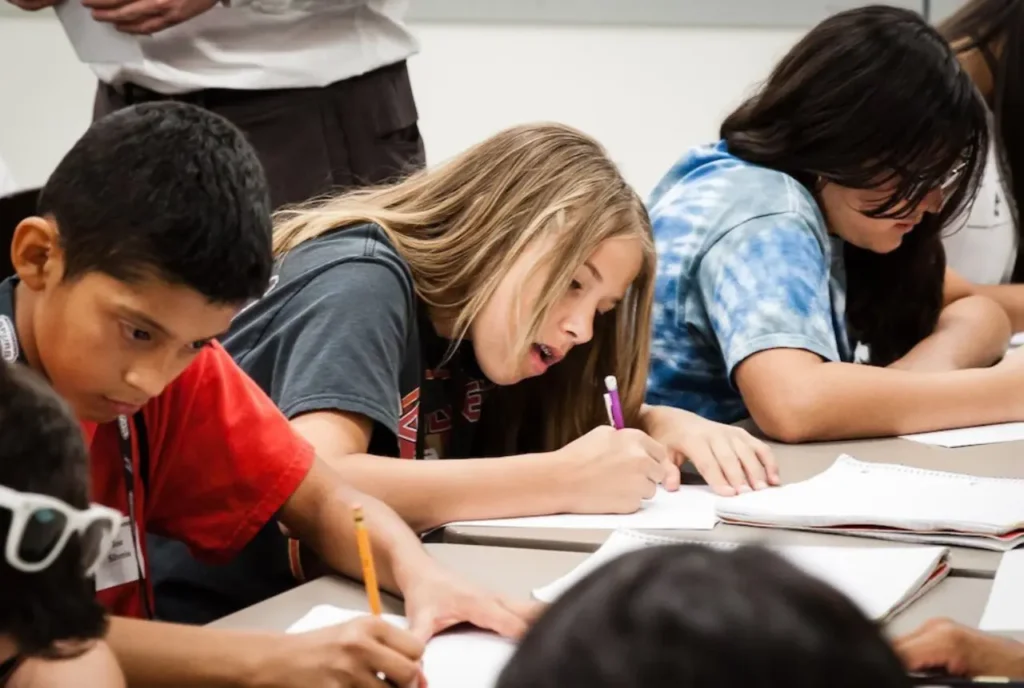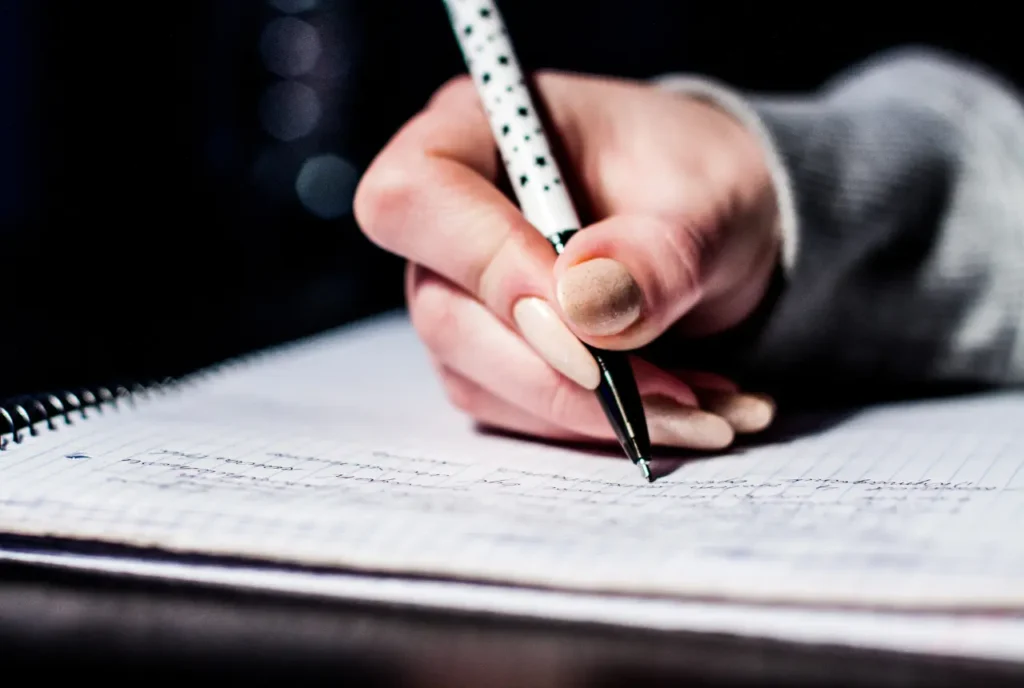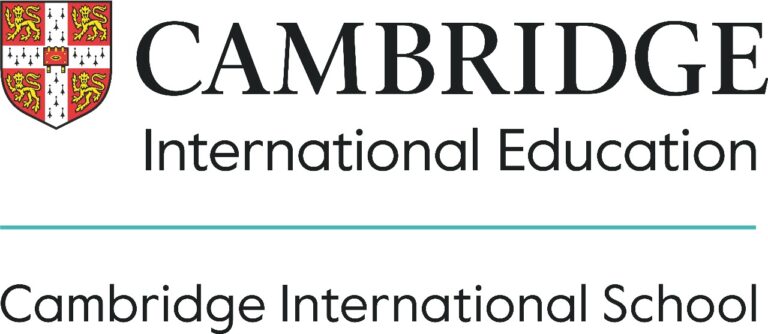![]()
Teaching students to study effectively can transform their academic journey, turning challenges into triumphs. Imagine a classroom where students not only understand what they’re learning but are also empowered with the tools to succeed independently.
This is the magic of instilling simple yet effective study habits. By introducing methods that are both practical and adaptable, educators can illuminate the path to academic excellence.
These strategies, when integrated thoughtfully, enhance focus, boost retention, and cultivate a genuine love for learning. Discover how to teach students to study by implementing these five powerful habits, each designed to foster a disciplined yet flexible approach to education.
These habits don’t just make learning more manageable; they build a foundation for lifelong intellectual curiosity and success.
How to Teach Students to Study? Simple Tips, Better Results!

Effective learning isn’t just about absorbing information—it’s about actively engaging with it. Passive learning involves merely reading or listening without interacting or processing the information deeply. In contrast, active learning requires students to participate in the learning process, which enhances understanding and retention.
Practical strategies for encouraging active learning include summarizing information in their own words, creating concept maps to visualize relationships between concepts, and discussing the material with a friend to explain and reinforce their understanding. These methods promote deeper engagement and help students process information more effectively. Additionally, spaced repetition techniques like flashcards and spaced retrieval practice can help reinforce learning over time by periodically reviewing information at increasing intervals.
Practice is crucial for solidifying knowledge and developing skills. It moves learning from theoretical understanding to practical application. Different practice methods include completing practice problems, which helps students apply theoretical knowledge to solve real-world problems, summarizing key points from readings to reinforce understanding, and creating presentations on learned material to synthesize information and improve presentation skills. The benefits of self-testing and using quizzes include identifying knowledge gaps and reinforcing learning. Self-testing helps students evaluate their understanding and retention of material, guiding further study efforts.
A distraction-free environment is essential for focused studying. Minimizing clutter promotes clarity of thought, eliminating digital distractions by turning off notifications limiting access to distracting websites, and ensuring proper lighting and ventilation reduces eye strain and promotes alertness.
Time management is critical for successful studying. Explain the concept of SMART goals (Specific, Measurable, Achievable, Relevant, and Time-bound), which help students set clear objectives and track their progress effectively. Tips for creating a realistic and effective study schedule include allocating time for different subjects or tasks, incorporating breaks to maintain focus and prevent burnout, and accommodating other commitments to ensure consistent study habits and reduce the likelihood of procrastination.
Taking breaks is essential for maintaining focus and preventing burnout. Techniques like the Pomodoro Technique (25 minutes of focused work followed by a 5-minute break) can enhance productivity and mental clarity. Emphasize the importance of getting enough sleep for memory consolidation and cognitive function, eating healthy foods to support brain function and overall well-being, and staying hydrated to maintain cognitive performance.
Habit 1: Active Learning Strategies

Active learning strategies help students stay engaged and remember what they learn better. Unlike passive learning, where students just receive information, active learning involves them in the process.
Summarizing Information: Have students put information into their own words. For example, after learning about cell structure in biology, students can write a short summary explaining what each part of the cell does.
Creating Concept Maps: These help students organize and connect ideas. In history, students can make a concept map to link different events and people from a certain time period, helping them see how ideas are related.
Discussion and Peer Teaching: Talking about material with classmates or teaching it to others reinforces learning. In math, students can work in pairs to explain and solve problems together, which helps them understand better.
Spaced Repetition Techniques: Using flashcards and spaced repetition helps with long-term memory. For instance, language learners can use flashcards to practice vocabulary, gradually increasing the time between reviews.
Interactive Activities: Engaging activities like debates in a literature class encourage critical thinking and expression of ideas.
Infographics and Flowcharts: Visual aids make learning more interactive and help simplify complex processes.
By using these active learning strategies, teachers can make learning more engaging and effective, helping students understand and retain information better.
Habit 2: Make it Stick with Practice and Self-Testing

Spaced repetition is a powerful technique for improving long-term memory. It involves reviewing material at increasing intervals, which strengthens memory retention and reduces the forgetting curve. For example, students can review their notes a day after learning, then again after a week, and finally after a month. This method ensures that the information is revisited and reinforced multiple times, aiding in long-term retention.
Various practice methods can help solidify knowledge and improve understanding. Creating practice problems is an effective way to apply learned concepts and identify areas that need further review. For instance, math students can solve additional problems related to the topics they’ve studied to deepen their understanding.
Rewriting notes in their own words is another valuable practice method. This activity forces students to process the information and express it in their own terms, enhancing comprehension. For example, after a history lesson, students can rewrite their notes, summarizing key events and their significance in their own words.
Habit 3: Craft Your Study Sanctuary

Creating a dedicated study space is important for focused and effective studying. Start by choosing a quiet area with few distractions. Keep the space tidy by removing unnecessary items and only having essential study materials nearby. An organized environment reduces stress and helps you concentrate better.
To avoid noise distractions, use noise-canceling headphones or play soft background music. Set up your study area away from busy places and make sure it has good lighting and fresh air to keep you comfortable and alert.
Adding certain tools can make your study time more productive. Use mind maps to organize information visually and connect ideas. A whiteboard is helpful for writing down key points, brainstorming, and solving problems. Highlighters can mark important information in your notes and textbooks, making it easier to review later.
Personalize your study space with things that inspire and motivate you, like a vision board or motivational quotes. Keeping your study area clean and well-organized creates a good learning environment, making it easier to focus and study effectively. By creating a study sanctuary, you set yourself up for better and more productive learning sessions.
Habit 4: Be SMART About Goals and Scheduling
Setting SMART goals is key to effective studying. SMART goals are Specific, Measurable, Achievable, Relevant, and Time-bound. Here’s how to set them:
Specific: Define clear goals. Instead of “Study math,” try “Complete five algebra problems.”
Measurable: Make sure your goals can be measured. For example, “Read two chapters of history and summarize the key points.”
Achievable: Set realistic goals that you can reach. Don’t overload yourself with too many tasks.
Relevant: Align your goals with your academic needs. Focus on areas needing improvement or important for exams.
Time-bound: Set a deadline for each goal. For example, “Finish the biology project by Friday evening.”
Creating a realistic and flexible study schedule is also important. Plan specific times for studying, considering when you focus best. Balance study sessions with breaks to avoid burnout. Use a planner or digital calendar to organize your tasks and deadlines. This way, you stay on track and manage your time effectively.
Habit 5: Prioritize Well-being for Optimal Learning

Prioritizing well-being is crucial for maintaining optimal learning abilities. A healthy lifestyle directly impacts concentration, memory retention, and overall academic performance.
Sleep: Adequate sleep is essential for cognitive function and memory consolidation. Aim for 7-9 hours of sleep per night to feel refreshed and alert during study sessions.
Diet: Maintain a balanced diet rich in fruits, vegetables, lean proteins, and whole grains. Avoid excessive caffeine and sugary snacks, which can lead to energy crashes.
Physical Activity: Incorporate regular exercise into your routine. Even a short walk or stretching session can improve blood flow to the brain, enhancing focus and mental clarity.
Stress Management: Practice stress-reducing techniques such as meditation, deep breathing exercises, or progressive muscle relaxation. These methods promote relaxation and help alleviate anxiety during study sessions.
Creating a study routine that prioritizes well-being can lead to improved academic performance and overall well-being. By incorporating these tips into your daily routine, you can enhance your ability to concentrate, retain information, and manage stress effectively.
Conclusion
In conclusion, developing effective study habits is crucial for achieving academic success and maximizing learning outcomes. Throughout this blog post, we’ve explored five key study habits that can significantly enhance your study sessions and improve your overall academic performance. Remember, effective study habits not only boost your grades but also equip you with valuable skills for lifelong learning. As you continue your academic journey, we encourage you to explore additional resources and tips to enhance your study routine.
Share your own study tips and experiences in the comments below to support and inspire fellow students on their learning path. Together, we can create a community of learners committed to achieving their academic goals through effective study habits and continuous improvement. Happy studying!










